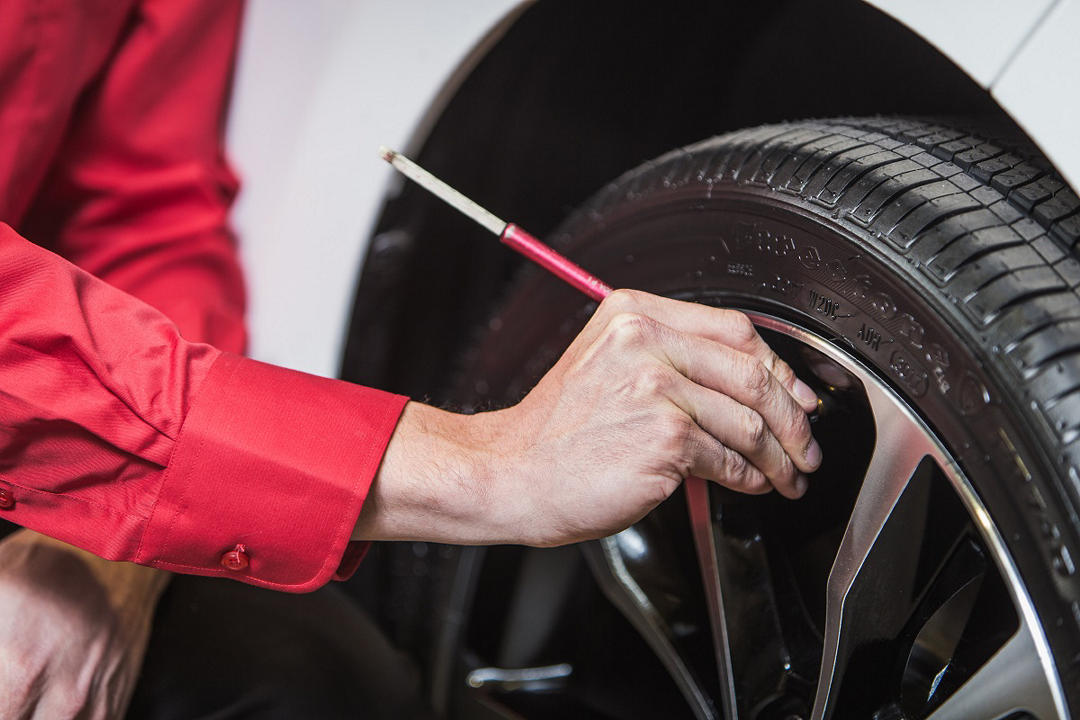LANGUAGES

Toronto, May 13, 2020 – With Canadians respecting physical distancing, many people are staying home as much as possible – and that means their vehicles are being used much less often. That’s excellent news in the fight against the spread of COVID-19 – but not so great for the vehicles.
“Vehicles are designed and engineered to be driven – and parking them for extended periods of time can lead to various issues,” said Bryon Stremler, National Manager, Product Quality and Service Support at Toyota Canada.
Fortunately, he says there are a few simple steps every owner can take to ensure their vehicle remains in good working order.
“The best place to start is to take the vehicle for a 20-minute drive once a week,” he explains. “This helps keep the battery charged, many essential systems lubricated and moving parts corrosion-free.”
If you’re only going out for essential trips that would normally require a shorter drive, you can always incorporate the 20-minute drive into the trip – for example, by taking an indirect route to the grocery store. As long as one leg of your trip is at least 20 minutes long, your vehicle will benefit.
Here are some of the specific components that benefit from Stremler’s suggested 20-minute weekly drive:
- Batteries: All batteries drain slightly while sitting and, if left too long, the battery will not be able to start the vehicle. According to Stremler, the weekly 20-minute drive is sufficient to properly recharge an otherwise healthy battery.
- Tires: A vehicle that sits idle for too long will develop flat spots on its tires, Stremler adds, resulting in unwelcome vibration while driving. A flat spot will usually resolve itself with the weekly 20-minute drive but, if a vehicle is left sitting too long, the tires could develop permanent flat spots which would need replacing. Tires can also lose pressure and should be checked regularly regardless of how frequently the vehicle is being driven.
- Brakes: If brake components aren’t used regularly, Stremler says, they can develop problems ranging from corrosion on the rotors to seized calipers. The weekly 20-minute drive will help keep these vital safety components in good condition.
- Rubber components: Drive belts and other rubber components can dry out and split or crack if they are allowed to simply sit, he adds. The weekly 20-minute drive will keep these flexible.
- Wiper system: Stremler stresses that the washer fluid system and wiper blades should also be maintained. As part of the weekly 20-minute drive, use the washer function to spray the windshield and work the blades. Do the back window too, if your vehicle has a rear wiper. Do not run the wipers on dry windows: it can damage the wiper blades, the window, or both.
Other things Toyota Canada’s Bryon Stremler suggests you consider doing whenever your vehicle is parked more often than usual:
- Don’t idle: Stremler notes that simply starting and idling a vehicle is not sufficient. Idling doesn’t ensure that all moving parts remain in good shape and properly lubricated. (In addition, idling generates excess tailpipe emissions that can pose a health hazard. Vehicles should never be left to idle in a poorly ventilated or enclosed area, such as a garage.)
- Gasoline: Stremler notes that many people don’t realize that gasoline has a shelf life – particularly lower-grade gasoline, which can go stale in as little as three months. Due to the chemical composition of gas, its lighter, more volatile components evaporate over time. If gasoline goes stale, it can lead to various problems – ranging from hesitation, stalling and a lack of engine power to a failure to start. Vehicles parked for a long time may also build up moisture in their fuel tanks, leading to water mixing with the fuel. Keeping the fuel tank full can help prevent moisture build-up. If a vehicle is going to sit for a long time with a full tank, Stremler suggests adding a water removable additive when filling the tank to help remove moisture from the fuel system, clean the system, and stabilize the fuel. These additives are available from dealers, garages, or auto supply stores.
- Exterior finish: Even while sitting idle, the exterior of a vehicle is exposed to many potential sources of damage. Unless it’s stored inside, and away from these hazards, Stremler recommends periodic cleaning. In particular, be sure to clean the exterior of the vehicle if tree sap, dead insects or bird droppings are present on the paint surface.
- Animals: Parked vehicles can become refuges for rodents. To minimize the chance of this happening, Stremler suggests avoiding parking on grass or near bushes. Instead, try to park on gravel or pavement – and not near garbage. Watch for signs of rodents, such as droppings or nibbled paper. And, if the vehicle has been sitting for any length of time, Stremler suggests tapping on the hood before starting the vehicle to scare off any animals that may have stowed away in the engine compartment.
Finally, don’t forget about regular maintenance. If in doubt about how to maintain the health of your vehicle, the best place to start is always the owner’s manual and the service professionals at your local dealership.
“Vehicles require regular servicing, even if they’re not being driven,” said Stremler, noting that the recommended service interval for all Toyota and Lexus models is 8,000 kilometres or six months, whichever comes first.
Since many dealers have changed their procedures to ensure physical distancing and other health measures, drivers should contact their local dealer before visiting to discuss their needs.
Every effort has been made to ensure the product specifications, equipment, and content on this site are accurate based on information available at time of publishing. In some cases, certain changes in standard equipment or options may occur, which may not be reflected online. Toyota Canada reserves the rights to make these changes without notice or obligation.